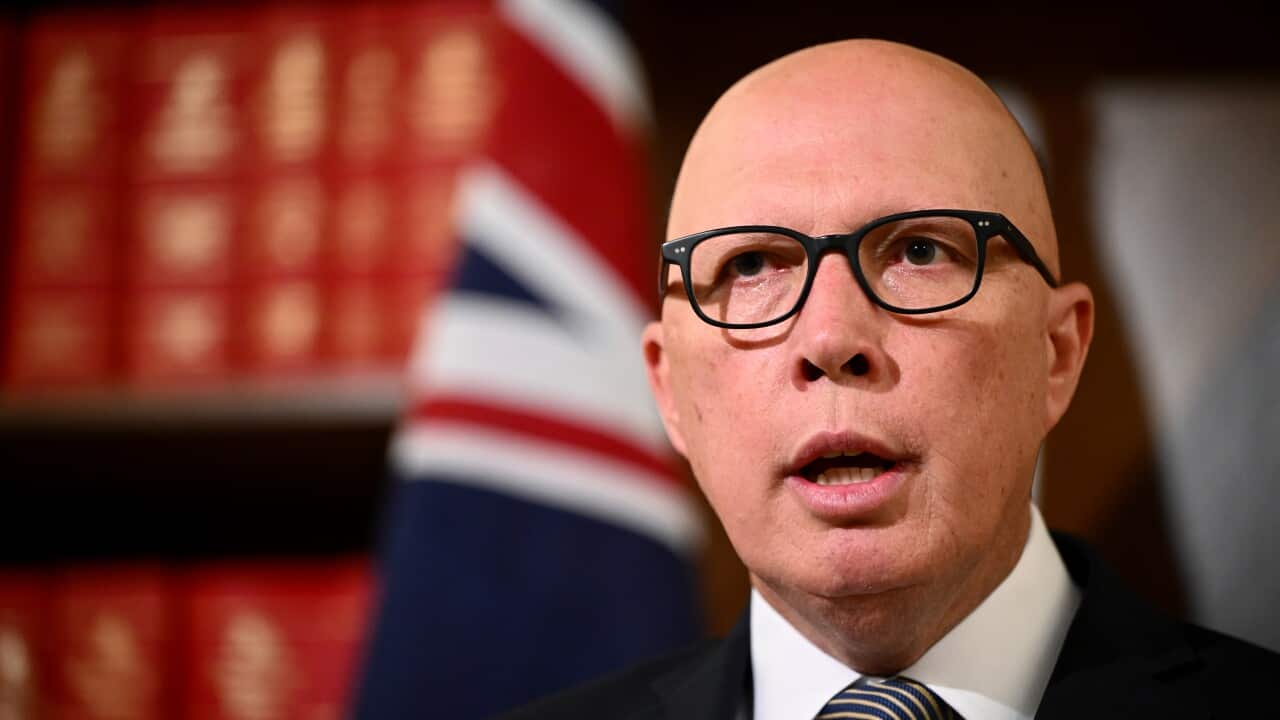Key Points
- The Opposition claims its nuclear energy plan will reduce energy bills by 44 per cent.
- Peter Dutton claims the plan means electricity supply will be more 'reliable'.
- However the costings did not reveal what energy bills will cost under the plan.
Energy Minister Chris Bowen says the long-awaited costings of the Opposition's nuclear energy transition plan has "three fatal errors".
The Opposition claims its "reliable" energy mix, which includes converting seven end-of-life coal-fired plants into nuclear reactors, will reduce energy bills by 44 per cent.
Opposition leader Peter Dutton told reporters on Friday that the plan would "make electricity reliable, it will make it more consistent, cheaper, for Australians and it will help us decarbonise as a trading economy, as we must".
Frontier Economics modelled the Opposition's plan at $331 billion — $263 billion less than Labor's renewable transition.
The costings have also been criticised by industry experts.
Bowen says the costings incorrectly assumed Australia will need less energy in 2050. "This is a fatal error in their costings and it is a dangerous error because it is risky," he said.
He said Dutton had: "rejected the work of the CSIRO and the Australian Energy Market Operator (AEMO) and they have assumed an ongoing cost of $30 a megawatt hour when it comes to nuclear. AEMO and CSIRO say to recoup the capital cost of nuclear, that would need a price of 145 to $238 a megawatt hour. That’s a big difference."
He also said the Opposition had assumed savings would be made by needing fewer transmission lines but hadn't said which transmission-line projects would be cancelled.
"After months of talking about what nuclear would mean for energy bills, they couldn't even put a price on the impact of their plan on the average bills of Australians," Bowen said.
He also disputed the modelling that priced the government's policy at $600 billion.
Bowen argued the government plan would cost $122 billion, citing a forecast by AEMO.
Opposition energy spokesperson Ted O'Brien defended the independent costings, stating that any exclusions were based on "what Labor has been modelling".
"So people say something that been excluded like the cost of EVs and home batteries, well, that is because Labor's modelling excludes that and in order for us to compare their model to our model we had to adopt some of those basic assumptions," he said.
Dutton said Labor's support for nuclear submarines meant there were "no safety concerns around nuclear", as he pushed for reversing Australia's nuclear energy ban.
Labor's plan is to boost renewables to 80 per cent of the grid by 2030 and increase the figure to 90 per cent by 2050, with the remainder made up of storage and gas.
CSIRO report casts doubt over Opposition costings
A report released just ahead of Dutton unveiling the Opposition's modelling found deferring coal power station closures would increase Australia's carbon emissions in the medium term.
For the seventh straight year, the GenCost 2024-25 report found renewable energy sources are the lowest-cost of any new-build electricity-generating technology.
Nuclear energy generation would be 1.5 to two times more expensive than large-scale solar, according to the analysis by the national science agency CSIRO and AEMO.
Experts have said energy market operators will need to establish new connection points to safely supply the national electricity grid.

Federal Energy Minister Chris Bowen said the Opposition's nuclear plan costings do not add up. Source: AAP
"They have had to make some very heroic assumptions here, and they have had to really stretch the truth to try to get some very dodgy figures."
Keeping coal-fired power plants open beyond their lifespan was a threat to energy reliability, with outages and breakdowns happening on a daily basis, Bowen said.
'Misleading': Reaction to Opposition's nuclear plan
The Opposition is pushing for an end to Australia's nuclear energy ban but has faced opposition from states who
The reaction from experts has been swift, with climate councillor and economist Nicki Hutley stating that the Opposition has "knowingly mislead Australians on true costs of nuclear".
The Climate Council identified four ways the Opposition was "cooking the books", including underestimating costs, the timeline of reactors, not factoring the costs of keeping coal-fired generators operational and excluding costs such as a managing nuclear waste from their figures.
Nuclear power doesn't stack up for Australian families or businesses, iron ore company Fortescue's executive chairman Andrew Forrest said on Friday.
"As our national science agency has shown, 'firmed' solar and wind are the cheapest new electricity options for all Australians," he said in a statement.
Forrest, who is a big player in the non-fossil fuels energy market, said that without continued action on "low-cost, high-efficiency renewable energy", Australians will be left with "pricier power and crumbling coal stations".













